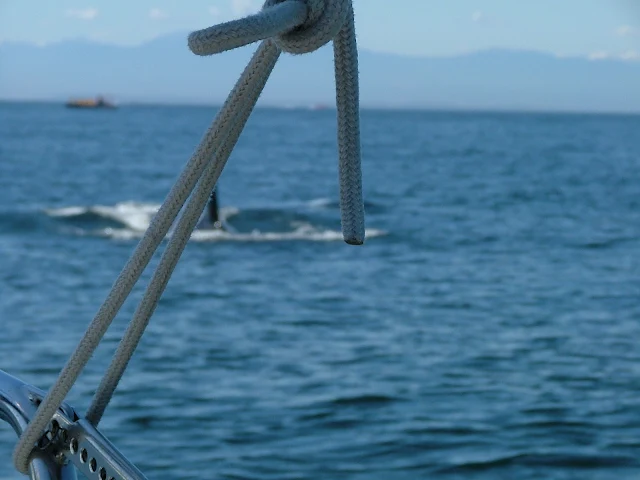Patos is as far north as you can get and still have some land to land on before entering Canada.(Okay, I know Point Roberts has some land, but we have no need for customs today)
Patos is just north of Sucia, hardly two miles depending on where you measure, so you can run up there in just an hour or much less. What you will have when you get there is two islands, Patos and Little Patos, together they create a pretty cool little anchorage. Run your boat all the way to the north end and enter alongside the lighthouse, have your camera ready, its a picturesque place for sure. There are no docks so puttster up to the dinghy beach and drop anchor in front of the picnic area. Back in the woods 75 yards or so is a nice campground along the trail to the lighthouse.
Basically there are two trails to hike. There is a one-miler or so that makes a circle in the woods and is sort of boring, so you have been warned. The other is a ten minute walk out to the lighthouse and most of it is akin to a road. Be sure to visit the lighthouse, recently volunteers have been holding open house during peak summer months. Inside they have old photos, scrap books, artifacts and you can climb the light tower. (it's hot up there if the sun is out)
If you want to keep your walking to an absolute minimum on perfect concrete pathways, run your dinghy ashore next to an old concrete thing with a post sticking out of it. It's left over from when the coast guard needed a landing spot. This concrete thing is well inside the protection of the anchorage bay, but its at least halfway or closer to the light house. You will have to scramble up a rock or two, but right at the top begins a three foot wide concrete path that goes all the way to the light house. We choose this route if we are only headed for the lighthouse, its saves rowing and walking, and if we are anchored right in front, why not!
A little warning about the tiny channel between Patos and Little Patos:
Yes you can run your boat through there but, there may be a current and at low tide it gets a little thin. It's kinda creepy when you can see bottom on both sides of your boat. We take our boats through, but only dead slow into the current, never with the current. If you are the least bit concerned, just go around, it's only one or three minutes and you get to take a picture of the lighthouse to boot.
I recommend visiting Patos for lunch or spend the night, On our last trip to points further north we used Patos as a jumping off point and a return point, it was like coming home.
This is the concrete thingy, (you have to see it) the teensey dinghy beach and the trail is to the left between the rock and the post. BTW, you could anchor here and stern tie to that post. You can see the picnic area and main dinghy beach way, way beyond the anchored boats, so this saves some walking and rowing.
This trail was built to US Coast Guard standards, it's probably a foot thick.

There is a lot of old foundation concrete out in the grassy areas on both sides, with a little sleuthing you can figure out where the buildings were, and imagine much of the original installation. Pictures and drawings inside the building show where everything was.
Volunteers camp in the campground and maintain hours for visitors, you could spend several hours inside learning the history, its well on its way to being a museum. Don't forget the Stuart Island lighthouse has a similar setup and they do call it a museum.














